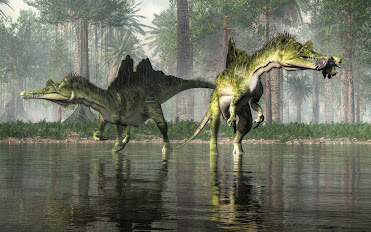 |
| Nunatsiarmiut Mother and Child, Baffin Island, Nunavut |
As part of the Qikiqtaaluk Region of Nunavut, Baffin Island is home to a constellation of remote Inuit communities each with a deep cultural connection to the land — Iqaluit, Pond Inlet, Pangnirtung, Clyde River, Arctic Bay, Kimmirut and Nanisivik.
The ratio of Inuit to non-Inuit here is roughly three to one and perhaps the reason why the Inuktitut language has remained intact and serves as the mother tongue for more than 36,000 residents. Inuktitut has several subdialects — these, along with a myriad of other languages — are spoken across the north.
If you look at the helpful visual below you begin to get a feel for the diversity of these many tongues. The languages vary by region. There is the Iñupiaq of the Inupiatun/Inupiat; Inuvialuktun of the Inuinnaqtun, Natsilingmiutut, Kivallirmiutut, Aivilingmiutut, Qikiqtaaluk Uannanganii and Siglitun. Kalaallisut is spoken by many Greenlandic peoples though, in northwest Greenland, Inuktun is the language of the Inughuit.
We use the word Inuktitut when referring to a specific dialect and inuktut when referring to all the dialects of Inuktitut and Inuinnaqtun.
 |
| Northern Language Map (Click to Enlarge) |
The word for hello or welcome in Inuktitut is Atelihai — pronounced ahh-tee-lee-hi. And thank you is nakurmiik, pronounced na-kur-MIIK.
Perhaps my favourite Inuktitut expression is Naglingniq qaikautigijunnaqtuq maannakautigi, pronounced NAG-ling-niq QAI-kau-ti-gi-jun-naqtuq MAAN-na-KAU-ti-gi. This tongue-twister is well worth the linguistic challenge as it translates to love can travel anywhere in an instant. Indeed it can.
You have likely seen or heard the word Eskimo used in older books to refer to the Inuit, Iñupiat, Kalaallit or Yupik. This misnomer is a colonial term derived from the Montagnais or Innu word ayas̆kimew — netter of snowshoes. It is a bit like meeting a whole new group of people who happen to wear shoes and referring to them all as cobblers — not as a nickname, but as a legal term to describe populations from diverse communities disregarding the way each self-refer.
 |
| Inukshuk / Inuksuk Marker Cairn |
The Inuit of Greenland self-refer as Kalaallit or Greenlanders when speaking Kalaallisut. The Inupiat of Alaska, or real people, use Yupik as the singular for real person and yuk to simply mean person.
When taken all together, Inuit is used to mean all the peoples in reference to the Inuit, Iñupiat, Kalaallit and Yupik. Inuit is the plural of inuk or person.
You likely recognize this word from inuksuk or inukshuk, pronounced ih-nook-suuk — the human-shaped stone cairns built by the Inuit, Iñupiat, Kalaallit, Yupik, and other peoples of the Arctic regions of northern Canada, Greenland, and Alaska — helpful reference markers for hunters and navigation. The word inuksuk means that which acts in the capacity of a human, combining inuk or person and suk, to substitute.
A World of Confusion
You may be disappointed to learn that our northern friends do not live in igloos. I remember answering the phone as a child and the fellow calling was hoping to speak to my parents about some wonderful new invention perfect for use in an igloo. He was disappointed to hear that I was standing in a wooden house with the standard four walls to a room and a handy roof topping it off. "Well, what about your neighbours? Surely some of them live in igloos..." It seems that some of the atlases in circulation at the time, and certainly the one he was looking at, simply blanketed everything north of the 49th parallel in a snowy white. His clearly showed an igloo sitting proudly in the centre of the province.
My cousin Shawn brought one such simplified book back from his elementary school in California. British Columbia had a nice image of a grizzly bear and a wee bit further up, a polar bear grinned smugly. British Columbia's beaver population would be sad to know that they did not inhabit the province though there were two chipper beavers with big bright smiles — one in Ontario and another gracing the province of Quebec. Further north, where folk do build igloos, they were curiously lacking.
Igloos are used for winter hunting trips much the same way we use tents for camping. The Inuit do not have fifty words for snow — you can thank the ethnographer Franz Boas for that wee fabrication — but within the collective languages of the frozen north there are more than fifty words to describe it. And kisses are not nose-to-nose. To give a tender kiss or kunik to a loved one, you press your nose and upper lip to their forehead or cheek and rub gently.
Fancy to try a wee bit of Inuktitut yourself? This link will bring you to a great place to start: https://inhabitmedia.com/inuitnipingit/
Inuit Language Map: By Noahedits - Own work, CC BY-SA 4.0. If you want to the image full size, head to this link: https://commons.wikimedia.org/w/index.php?curid=85587388



























